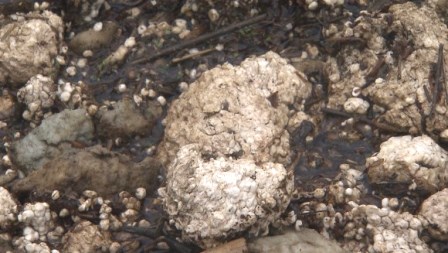The following materials and methods are required to encapsulate foam flotation.
Note: a “mil" is 1/1000 of an inch.
- Concrete 1.0 inch or more in thickness.
- Galvanized steel 0.065 inch or 16 gauge or more in thickness.
- Liquid coatings, 30 mils or more in thickness, bonded chemically or secured by other means.
- Rigid (hard) plastics, 50 mils or more in thickness.
- Fiberglass and plastic resins, 30 mils or more in thickness, bonded chemically or secured by other means.
- Pliable (soft) plastic sheets, 10 mils or more in thickness, bonded chemically or secured by other means.
- The process of using shrink-wrap with shrink-wrap sheets, 10 mils or more in thickness, is allowed. Many layers of single plastic sheets less than 10 mils in thickness are not allowed.
- Non-treated dimensional wood 4 inches or more in thickness.
- Non-treated marine grade plywood 0.5 inch or more in thickness.
Use the above materials and methods for repairs and maintenance to existing encapsulated foam flotation. If your structure was built using older approved materials and methods (7 mil plastic sheets, 1.5 inches or more treated wood, 0.5 inches or more treated plywood), you can use the same materials and methods as the original standard used. Review the full rules:
OAR 250-010-0700 to 250-010-0715.
 White Bead Foam
White Bead Foam Oregon's encapsulation law applies to expanded polystyrene "white bead" foam, used as flotation. In a closed-cell foam, gas forms small pockets, completely surrounded by the solid material. The gas pockets are sealed from each other so they cannot soak up water. Because gaps are left between the beads, white bead foam tends to break down into small pieces when it rubs against other surfaces or the river bottom. The pieces enter the water, where they can endanger waterfowl and fish that mistake foam for food. Please help protect wildlife and water quality by encapsulating your foam.
Benefits from Encapsulation
Covered foam lasts longer than uncovered foam. Once you make the initial investment, you will save maintenance time and costs. The other benefit is a longer life expectancy for the structure.
Fewer foam pieces in the water improve the appearance of your property or facility. This adds to attracting potential customers and a more enjoyable atmosphere for everyone.
Contact Glenn Dolphin, Environmental Programs Coordinator, at 503-856-6709 with any questions.